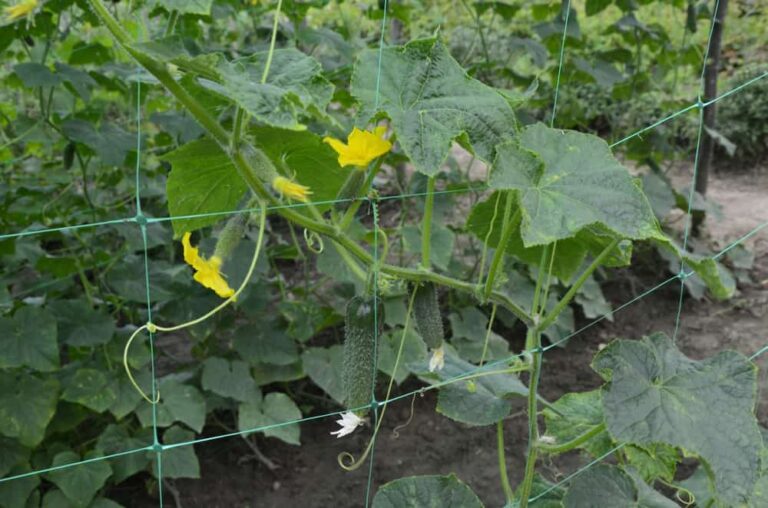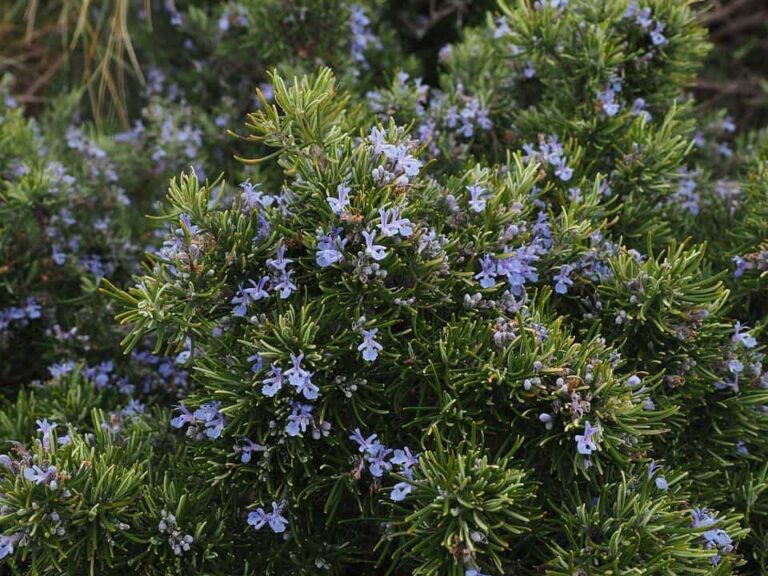Quick Tips for Garlic Spacing
Garlic, like other things you grow in the garden, needs to be spaced properly to avoid competition for nutrients and water between cloves. Garlic spacing depends on the variety of garlic you choose to plant.
Hardneck and softneck garlic have bulbs that are different in size, but their spacing is generally the same, about four to six inches between cloves. Elephant garlic, however, is much larger and may need at least eight to ten inches between its cloves for proper growth. Be sure to check your variety’s requirements when you purchase it for specific spacing between cloves and rows.
Why is it Important to Space Garlic Properly?
As with anything grown in the garden, garlic needs to have space for optimal growth. Without proper space, your garlic cloves will compete for nutrients and water in the soil.
Once they begin to sprout from the ground, they’ll also start competing for sunshine. What does all this competition mean? They could take a longer time to mature and can result in smaller, less healthy bulbs.
Not leaving enough space in the ground can also cause deformation of the bulbs if they bump into each other in the soil as they grow. Or, root systems can become entangled, ruining your garlic’s nutrient and water supply.
Some gardeners use traditional spacing for garlic, which means long, single rows with plenty of space in between each row and between each clove. Others use intensive spacing, or smaller amounts of space between rows and cloves, for a more productive harvest in a smaller area.
Regardless of what type of spacing you’d prefer, which usually depends on the size of your garden, you’ll need to research the requirements for the particular garlic varieties you’ve chosen to plant.
Why Do Different Garlic Varieties Require Different Spacing?
There are two main classifications of garlic: Softneck and hardneck. Softneck varieties usually have smaller bulbs with smaller, but more numerable, cloves than hardnecks. Hardneck garlic bulbs are larger with fewer, but larger, cloves.
There is also a third classification known as elephant garlic. These are great to plant for very large bulb production, but not as favored as softneck and hardneck varieties by gardeners.
The cloves of softneck and hardneck garlic varieties are different in size, but their varieties typically require similar spacing techniques. However, elephant garlic varieties can require a few more inches of space between cloves and rows.
As a rule, hardneck and softneck cloves may need an inch or two less space than elephant garlic cloves because their cloves don’t require as vigorous a nutrient supply, nor do their bulbs take up as much room in the soil.
Spacing with Tools
Some gardeners choose to use a tool to space garlic properly, as it can be less back-intensive and helps to create uniformly-spaced rows for a large area. For example, a gardener from Oregon created a rolling dibbler to help create the spacing for his garlic. This video also shows a garlic row marker used in large garlic fields for proper spacing:
If you’re going to use a spacing tool, make sure to first check the required spacing for your varieties to find the tool with the proper spacing guides.
If you’re using a garden bed, plan on having at least 32 to 72 square inches of space, depending on the size of the bulbs you’re growing.
Common Softneck and Hardneck Garlic Varieties
Although softneck and hardneck garlic bulbs differ in size, they don’t require a very different spacing technique. Most can benefit from, generally, the same spacing rules, give or take an inch or so.
For softneck and hardneck garlic, you should keep about eight to ten inches of space between your rows. Traditional spacers will plant a single clove every few inches, and intensive spacers may use double rows. Those using double rows will need to add one or two inches of space between cloves above their requirements.
Italian Late Garlic
Italian Late is a softneck garlic variety is a popular variety for cooking. The bulb is medium-sized, with several large and small cloves. These cloves need about four to six inches of space between them.
Western Rose Garlic
Western Rose is another popular softneck variety that has one of the longest shelf-lives. Western Rose bulbs are larger than most softneck varieties, but they still will benefit from about four to six inches of space between each planted clove.
Music Garlic
Music is a popular hardneck variety that harvests in early summer. This type of garlic products large bulbs with about five uniform, large cloves. Since the bulbs can be two inches or larger in diameter, they need at least six inches of space between cloves for optimal growth.
Chesnok Red
Chesknok Red is another hardneck variety that people love to use in cooking because it keeps its shape when baked or roasted and provides a mild flavor when cooking. This variety tends to produce some of the biggest bulbs of hardneck varieties, with nine or ten large cloves per bulb. Still, the spacing recommended for Chesnok Red is four to six inches apart in single rows.
Spacing for Larger Elephant Garlic Cloves
Elephant garlic is so named because of its very large size. Its flavor is a bit milder than regular garlic and a little sweeter, so it provides a unique flavor when cooked.
Elephant garlic does not come in different varieties, and is, instead, a variety all its own. Elephant garlic can have bulbs that range from golf ball-sized to up to about a pound in weight. They vary greatly in different regions depending on weather and soil conditions.
Elephant garlic grows best when planted in the fall, so if this is when you’re planting, be prepared for bigger bulbs and, therefore, more space between cloves. For larger bulbs and cloves, keep about eight to ten inches of space between each clove.
Planting during the spring will usually yield smaller bulbs so less space is needed. Planting smaller elephant garlic usually requires between six and eight inches of space between cloves.
You may also read our other articles about the spacing of carrots and kale.
Photo by megankhines licensed under CC BY-SA 2.0.






